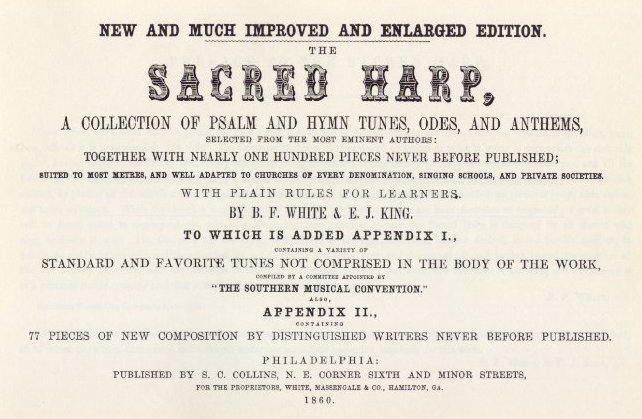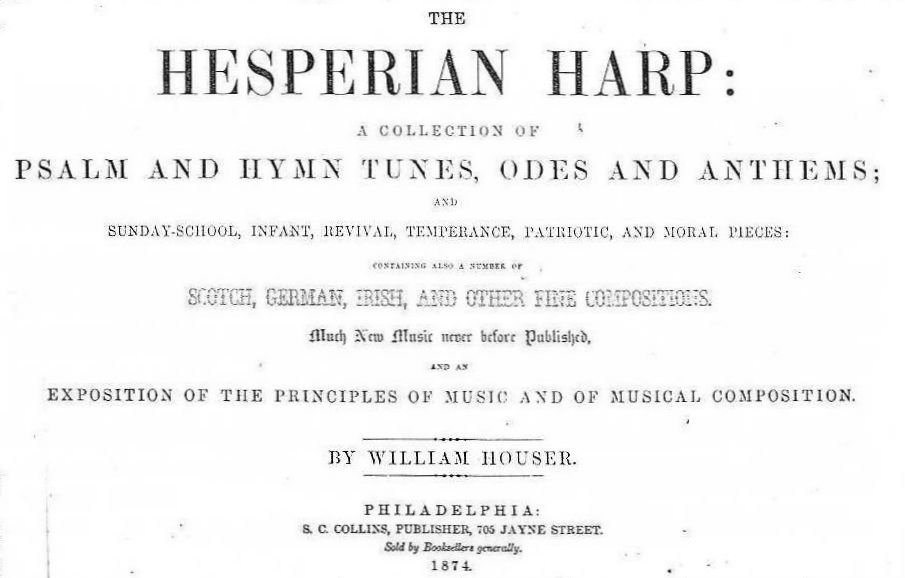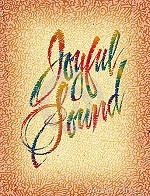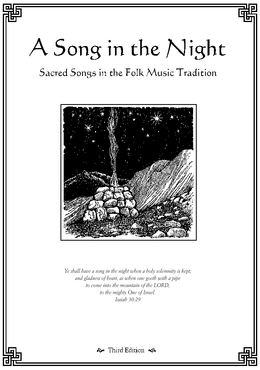
Songs from the early American “Sacred Harp” tradition. Sacred Harp or “Shape-note” music is a genre of religious music from early America (late 1700’s to mid 1800’s), which thrived in the rural communities. The tunes are often based on folk melodies or ballads. The songs were published in books with different shapes for the note-heads, to assist the musically unskilled people in sight-reading. The name “Sacred Harp” comes from the most popular of these shape-note tune books, one which is still being published today.
Along with the folk melodies, a native form of polyphony was developed known as the “fuging tune“. This form involved the different parts (soprano, alto, tenor, bass) coming in at different times, especially on the chorus. Unlike the smoothness of Renaissance polyphony, these rural compositions were very rhythmic and sometimes stark, but still quite beautiful. Parallel fifths and octaves were not shunned, but used as part of the musical palette. The composers were more interested in the melodic quality of the individual lines, and therefore allowed a certain amount of dissonance or clashes in the passing of parts.
Scenes Along Zion’s Road
The first collection I offer in this section was performed in the early 1990’s, before computers were well established. I found a rare copy of William Houser’s Hesperian Harp in a used bookstore, and experimented with different voices on a small Yamaha PSS-480 keyboard, which had a somewhat limited 5-track recording capability, and the unique ability to edit the two-voice FM sound patches (quite drastically if you wanted to). Anyway, here are my experiments with ancient music on a new technology: Scenes Along Zion’s Road
 Joyful Sound (with Nature)
Joyful Sound (with Nature)
This is another set of recordings based on William Houser’s Hesperian Harp. These recordings consist mainly of Recorders (SATB), Guitars, Accordian, Autoharp and Glockenspiel (occcasionally), and Voice. They were recorded around 1988.
Whereas the previous recordings (Scenes Along Zion’s Road), consist more of the native early American “fuging tunes”, this recording is largely composed of the folk-hymns, with their pentatonic scales and Scottish/Irish feel.
The original recordings were made without the dubbed in Nature sounds. It was only later, when I had purchased various tapes in Dan Gibson’s Solitudes series, that the idea occurred to me to mix some of these sounds in as background. This often worked surprisingly well, with the birds coming in at just the right times!
A Song in the Night
The third item in this section is a songbook I put together shortly after discovering early American shapenote music. I decided to continue the tradition and match up folk melodies with Christian poetry. So, along with some traditional songs from that era, I have added some Renaissance songs, and some new compilations, drawn from diverse sources (including Canadian folk songs).
I also wanted the book to look nice, so I decorated it with borders and line-art. And since I didn’t have access to a choir, most of the songs are presented with melody and chords only. Because of the beauty of the melodies, this kind of music also works very well with small instrumental ensembles, such as recorder/guitar. Here it is: A Song in the Night.
There are also two sets of recordings taken from this songbook: a fragmentary collection of songs from some Sabbath meetings, with instruments added on afterwards: Sabbath Meeting; and a single unrehearsed recording of a group of Canadian and American believers, singing various songs together from the book: North American Recordings.


